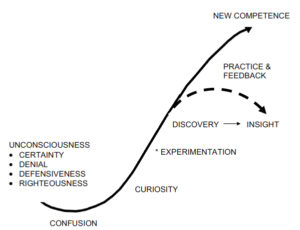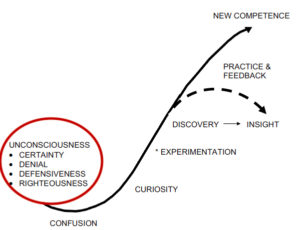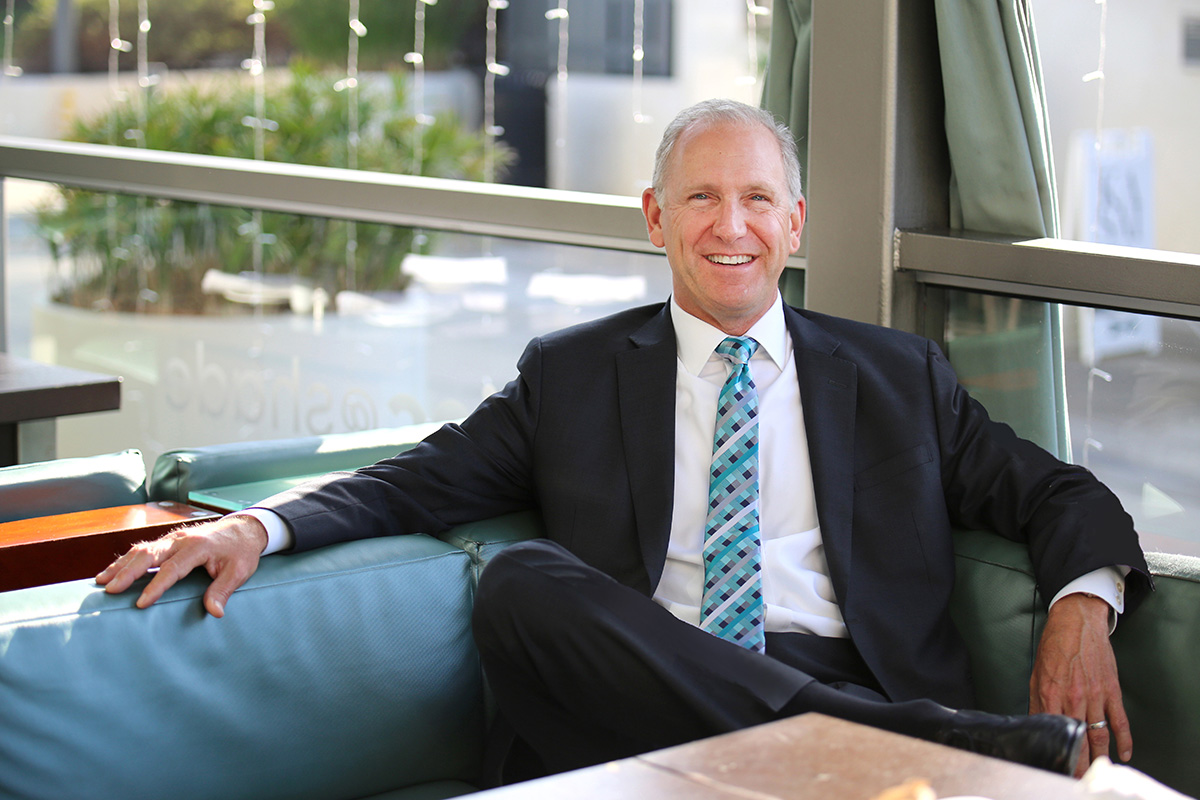Just what, exactly, makes for an effective management seminar? What do you look for, and what should be the goal of such a seminar? What should such an event prioritize, or highlight?
Many such seminars are only one or two days in duration, so it is unlikely that a seminar alone is going to be a sustainable driver for change in either the individual or the organization.
However, a seminar can be a tremendous opportunity to initiate change.
At Hallett Leadership, the purpose we frame for an effective management seminar is as follows:
To initiate a process of organizational transformation and development toward high performance leadership at every level of the organization.
Be at least 1% open
If we agree that the purpose of an effective management seminar is to initiate a process of transformation, what then? How do we accomplish the act of initiating this process of transformation?
At the very beginning of a seminar, it is not uncommon to notice arms folded over chests, and a perceived reticence among some participants. Therefore, we approach initial resistance to change by inviting participants to be at least 1% open to learning something new.
Why do we encourage people to be at least 1% open?
If at least 1% open, a person becomes available to see something that they weren’t aware of before; they become capable of venturing beyond the confines of their routines, habitual behaviors, and established modes of perception.
They become available for discovery.
The Discovery Model
 Hallett Leadership teaches through the Discovery Model (aka Discovery-Driven Process) because we’ve found it to be the most effective paradigm for group learning and growing new skills within an organization.
Hallett Leadership teaches through the Discovery Model (aka Discovery-Driven Process) because we’ve found it to be the most effective paradigm for group learning and growing new skills within an organization.
Why? Because true learning is not administered top-down, where students sit and passively receive information. Instead, they develop their own insights and skills through dialogue, collaboration, and experience – retaining the material that works best for them, and discarding what does not.
We Begin With What We Know
 As discussed in an earlier article where we introduced the Discovery Model, the student who initiates the discovery process begins their journey in their perceived reality. This is the unconscious place of their fixed beliefs, behaviors, assumptions, and automated ways of thinking and doing.
As discussed in an earlier article where we introduced the Discovery Model, the student who initiates the discovery process begins their journey in their perceived reality. This is the unconscious place of their fixed beliefs, behaviors, assumptions, and automated ways of thinking and doing.
If this is where we begin, then our first step toward developing something new is to venture out into the unknown… or the area marked on the graph as “confusion.”
Evolution wired us to be conservative with regard to change – to even dislike change. Therefore, the initial step into the unknown can be very uncomfortable. Our brains signal danger to our bodies, and we experience a modicum of stress. However, keep in mind that it is entirely normal for the personality to resist having its paradigms updated. The brain’s evolutionary resistance to receiving paradigm updates is at the heart of why we invite everyone on the first day of training to be at least 1% open to learning something new.
Openness Facilitates Progress
1% openness brings to mind the image of a door opened just a crack – only enough for a single sliver of light to reach through. This sliver is all that is required to venture into the unknown, which on the graph is represented as “confusion.”
Openness enables the individual to lay down their biases, and habitual ways of seeing, for the purpose of growing in awareness and improving along some line. This openness, therefore, is important not only at the initial stages of discovery, but at each stage along the line toward “new reality” in the upper right of the diagram.
As the individual and his/her teammates progress up the line, drawn by curiosity to test, innovate, and discover new ideas and modes of operating, remaining open to new inputs enables them to complete the cycle and arrive at a new shared reality.
Having reached the end of a discovery stage, a new stage is set to initiate again… in a process of continual improvement, there is always room to do something differently, or grow a new way of doing things.
Fortunately, this person remembers from the last cycle to be at least 1% open to becoming aware of something new…
Conclusion
To get the best ROI on your training investment, it is incredibly worthwhile to think of your management seminar in terms of catalyzing a process, rather than expecting instant transformation. Bring the seminar to your managers with the intention of catalyzing the development of high performance leadership inside your organization.





